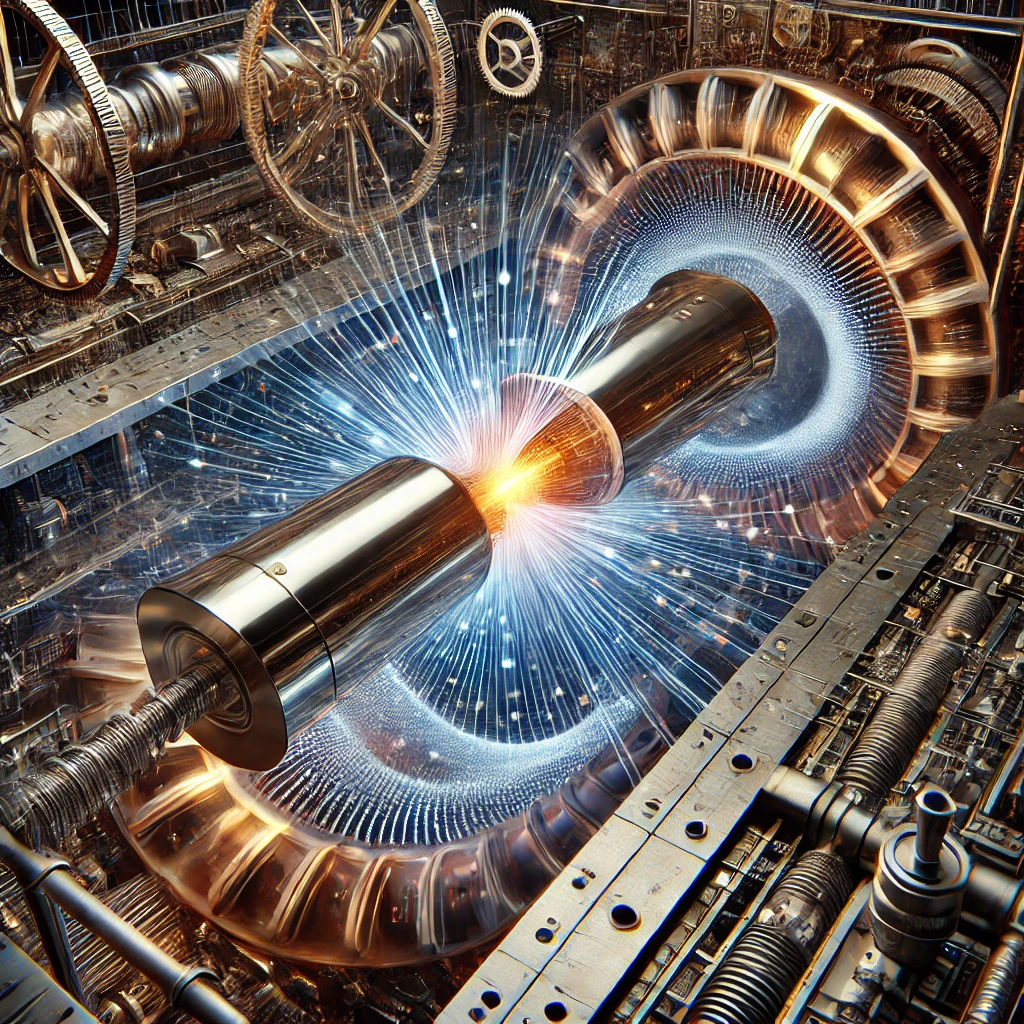
The Casimir Effect and the Tipler Cylinder are two fascinating concepts rooted in the realm of theoretical physics, each with its own unique implications.
Casimir Effect
The Casimir Effect is a physical force arising from the quantum vacuum between two closely spaced, uncharged, parallel conductive plates. In the 1940s, Dutch physicist Hendrik Casimir predicted this phenomenon. It occurs because of the quantum nature of the vacuum, which is not entirely empty but instead teems with virtual particles popping in and out of existence. These virtual particles create fluctuating electromagnetic fields.
When two conductive plates are placed very close to each other (at the nanoscale), the spectrum of allowed electromagnetic modes between the plates becomes restricted compared to the space outside the plates. This restriction leads to a net pressure difference, causing the plates to attract each other. This force is extremely small but measurable, and it has implications in fields such as nanotechnology and quantum field theory.
Tipler Cylinder
The Tipler Cylinder is a theoretical object in general relativity, proposed by physicist Frank J. Tipler in 1974. It is a hypothetical structure, an infinitely long, massive, and rotating cylinder. According to Tipler’s calculations, if such a cylinder were to rotate at a sufficient speed (near the speed of light), it could create a frame-dragging effect in spacetime.
This frame-dragging effect, according to the equations of general relativity, could potentially allow for closed timelike curves (CTCs), which are paths in spacetime that return to the same point in space and time—essentially, allowing for time travel. However, the conditions required for the Tipler Cylinder to work (such as being infinitely long and having an extremely high rotational speed) are not physically realizable, making it a purely theoretical construct. Despite its impracticality, the Tipler Cylinder remains an interesting topic in discussions about the possibilities of time travel within the framework of general relativity.
Engineering the Casimir Effect
Objective: To engineer and measure the Casimir Effect, the goal is to create a setup that can reliably detect the small attractive force between two closely spaced, uncharged conductive plates due to quantum vacuum fluctuations.
Key Challenges:
- Precision Fabrication: The plates need to be perfectly flat, smooth, and parallel, with a separation typically in the range of nanometers. Any imperfections could affect the measurements.
- Maintaining Vacuum Conditions: The experiment must be conducted in a near-perfect vacuum to eliminate air molecules that could interfere with the measurement.
- Minimizing Thermal Fluctuations: Temperature control is crucial because thermal vibrations could mask the small force due to the Casimir Effect.
Proposed Approach:
- Material Selection: Use highly conductive materials like gold or aluminum for the plates, which are also resistant to oxidation. The plates could be coated with a thin layer of metal using techniques like sputtering to achieve the required smoothness.
- Nano-Fabrication Techniques: Utilize advanced fabrication methods such as photolithography, electron beam lithography, or atomic layer deposition to create ultra-flat and parallel surfaces.
- Vacuum Chamber Construction: Design a vacuum chamber capable of reaching pressures as low as 10^-6 torr or better, to reduce interference from gas molecules. The chamber would include a system to control temperature precisely.
- Measurement Systems: Use a sensitive force sensor like a microelectromechanical systems (MEMS) device or an atomic force microscope (AFM) to detect the tiny forces involved. Laser interferometry could be employed to measure the distance between the plates with nanometer precision.
Engineering the Tipler Cylinder
Objective: To create a rotating mass capable of generating frame-dragging effects, potentially leading to the creation of closed timelike curves (CTCs) for time travel, based on the concept of the Tipler Cylinder.
Key Challenges:
- Massive Rotating Structure: The cylinder must have an enormous mass and rotate at relativistic speeds (near the speed of light).
- Material Strength: The structure must withstand the immense centrifugal forces generated by such high rotational speeds.
- Infinite Length: The original theory requires the cylinder to be infinitely long, which is physically impossible. Modifications to the theory would be necessary to deal with finite length.
Proposed Approach:
- Feasibility Study: Before construction, theoretical studies must be conducted to explore how a finite-length cylinder could approximate the effects of the original Tipler Cylinder. Modifications in the design might involve a very large but finite cylinder.
- Material Engineering: Identify materials with extreme tensile strength and rigidity, possibly composite materials, carbon nanotubes, or other advanced materials that could withstand relativistic rotational forces.
- Rotational Mechanics: Develop a propulsion system capable of spinning the cylinder at a significant fraction of the speed of light. This might involve advanced technologies such as electromagnetic fields or laser-driven rotation.
- Gravitational Control: Address how to generate or simulate the required mass. One possibility is to use a high-density core or a network of rotating superconductors to create an artificial gravitational field.
- Computational Modeling: Use computational simulations to model the spacetime geometry around the cylinder to predict and verify frame-dragging effects and the potential formation of CTCs.
Practical Considerations:
Casimir Effect: Real-world experiments have successfully measured the Casimir Effect, but scaling this up or applying it to practical engineering applications is challenging due to the minute forces involved.
Tipler Cylinder: This concept remains purely theoretical. The engineering challenges are immense, and current technology is far from capable of achieving the required conditions. Moreover, there are significant doubts about the feasibility of time travel, even within the theoretical framework of general relativity.
Conclusion:
The Casimir Effect has been experimentally observed and can be engineered at small scales with current technology. The Tipler Cylinder, on the other hand, is a theoretical construct that remains far beyond current engineering capabilities and may not be feasible even in principle.



